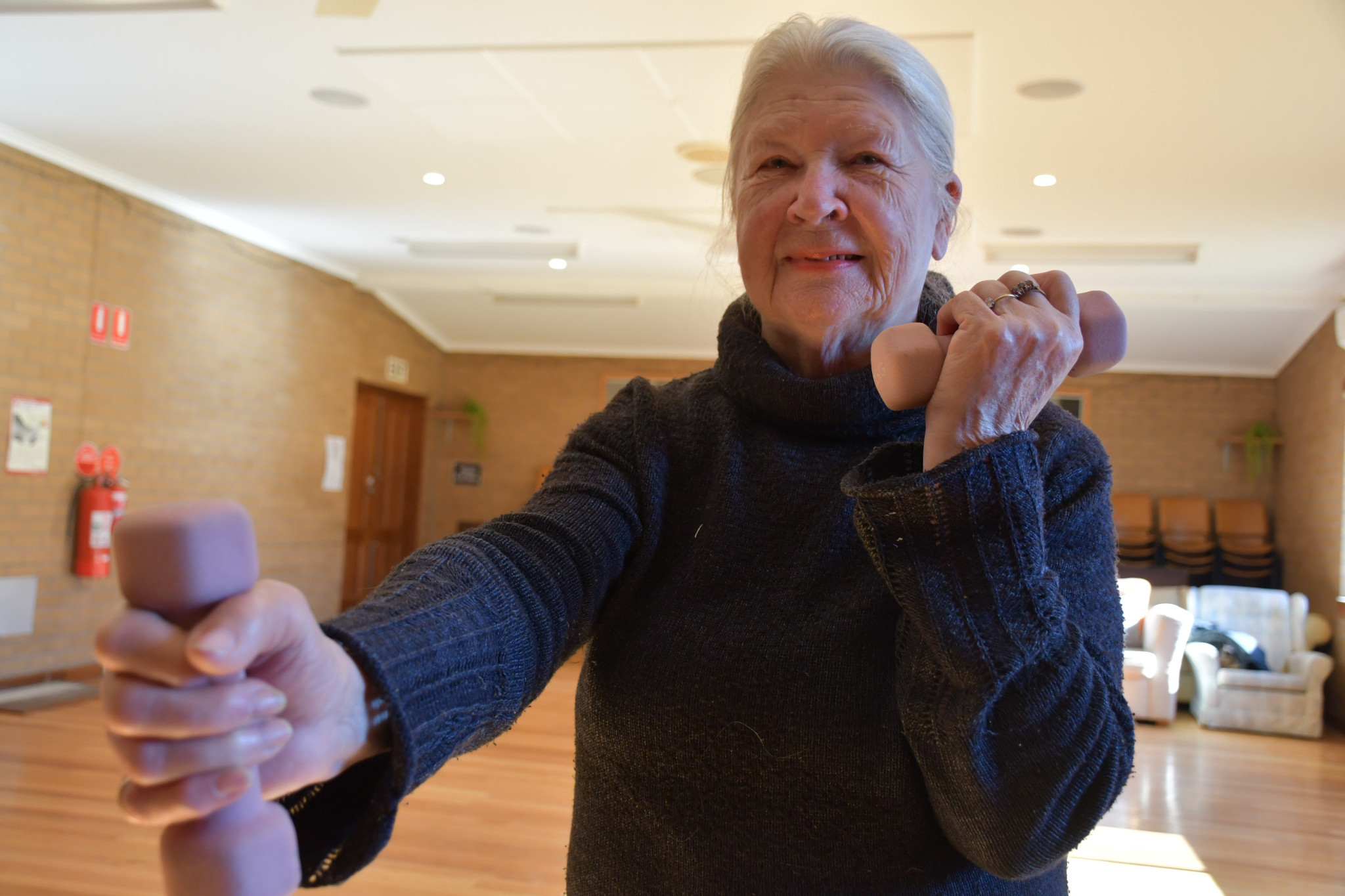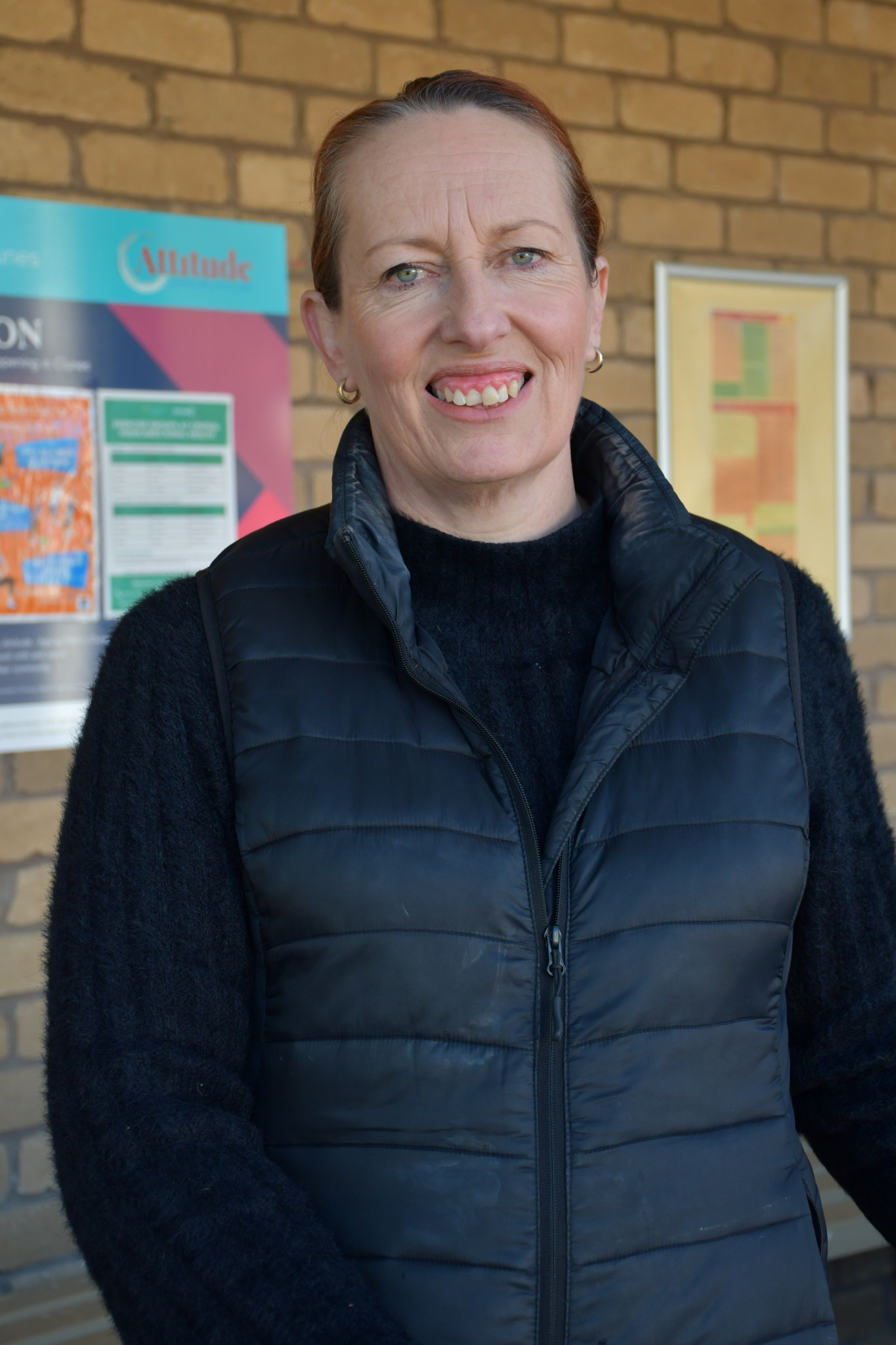General News
2 August, 2024
What does it mean to age well?
Clunes' Ageing Well program has benefited hundreds of residents since it began 12 months ago.

Patricia Cantwell is ageing backwards. And while it might seem like a curious case, the secret to rolling back her years is already out in the open.
Although she’s 83, Ms Cantwell’s biological and mental age may well be 65.
And the 18 year difference could be a product of only a single year’s effort — effort taken to exercise, meditate, socialise and most importantly, “giggle”.
Around 2022, Ms Cantwell was admitted to the hospital due to a severe illness and had to undergo two major operations while fighting a serious infection.
When she was discharged, she could barely stand, much less walk.
“I’d never been weak like that before,” Ms Cantwell said.
“I was always really active. I played a lot of tennis and I was also the sports captain in school — to go from that to not be able to move around was a hell of a shock.”
During her treatment, nurses informed Ms Cantwell that she had almost died. Twice.
But since then she has come far from death’s door, and closer to her youthful self.
With her feet planted confidently, dumbbells in hand, Ms Cantwell is ‘Ageing Well’.
She is one of many participants, who for the past 12 months, have had their pick of more than 50 regular classes including strengthening and yoga sessions, crocheting, and creative writing workshops.
These activities are part of the Attitude: Ageing Well in Clunes initiative, which is a collaboration between the Clunes Neighbourhood House, Central Highlands Rural Health and older members of the community.
The group came together after the dissolution of the town’s Senior Citizens Club, with its empty centre taken up by Attitude.
Since it opened up to residents, it is believed to have resulted in “stronger connections between activities and health services, as well as stronger people”.
Boasting significant success, the project could also offer a handy blueprint for Maryborough to build on.
“Nobody gives you a warning about what happens when you’re ageing and it’s been a big surprise to me,” Ms Cantwell said.
“Suddenly you discover your strength has just [disappeared] but this program has helped me to no end. When I first joined, I had to sit on a chair and exercise, now I’m standing.
“I have so much gratitude for this, and what it’s done for me — it’s fantastic.”
Every week, Ms Cantwell participates in at least two classes, and the friendships she’s formed in these sessions keeps her occupied the rest of the week.
“I’ve gotten terrific companionship out of it,” she said.
“A friend of mine, who lives in South Yarra, once told me she would love to be part of something like this.
“I think every community outside of Clunes should have a similar program.”
According to the latest census, Maryborough is home to about 3200 residents aged 60 and more.
Implementing a project akin to the Clunes’ model would therefore benefit nearly 40 percent of our local population.
But, how do we go about that?

“Maryborough is really well placed to replicate the program,” Clunes Neighbourhood House manger Lana de Kort said.
“There’s already a strong foundation — the town has two neighbourhood houses. It’s got a really active and involved council. There’s also a lot of community groups in the town.
“Those were the kinds of attributes that Clunes had too, and we essentially came together to explore what the community wanted.”
However, Ms de Kort said, there’s one important factor that makes their local project stand apart.
“All the community activity in the world can only get you to a certain point but it is that connection with the health service that has been really critical for us,” she said.
Through this partnership, the organisation is able to refer participants to the service, connect them directly with physiologists and introduce them to other practitioners as required.
If Maryborough established a similar system, supported by the local health service, then the benefits could also be tenfold.
“You can see through Patricia's story that there’s just so many advantages,” Ms de Kort said.
“If people are physically active, and socially connected — it means that they can live longer in their homes without much [dependence].”